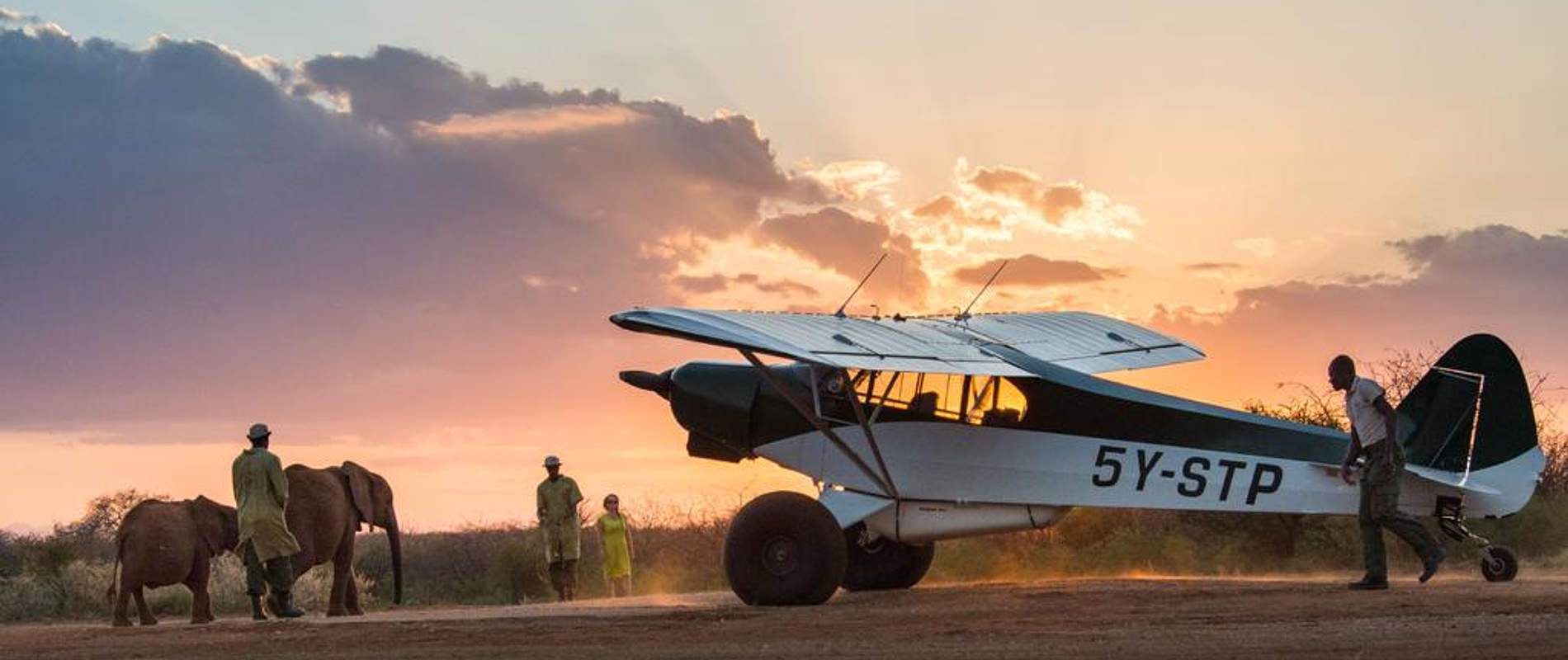Of the many moving parts that is the Sheldrick Wildlife Trust, our Kaluku Field HQ is undoubtedly its engine. This is the nexus of our field operations, the place where all our projects converge. Most fittingly, the 5,000 acres where Kaluku is situated border Tsavo East National Park, with the Athi and Mtito rivers acting as natural boundaries to the Park. This area is a particularly important buffer zone for Tsavo and it's wildlife, a seamless extension for the animals, that protects two sensitive river boundaries.
Turning off the dusty red dirt road at the “Kaluku” sign, one is immediately met with a hive of activity, given there are so many moving parts to our operations. It’s not unusual to be greeted by Sala and Sabassa, our orphaned kudus who seem to run the show, and any member of their little coterie of creatures. Tiny orphaned dik-dik ’Stix' likes to be where the action is, so he’s taken to patrolling the Operations' compound. He chose well, as the team here is, quite literally, working around the clock to monitor our various field teams across Kenya. It is they who provide the operational support for our Anti-Poaching, Mobile Vet, Canine and Aerial Surveillance Units — no small task, given the number of boots we have on the ground! Kaluku is home to many orphaned animals of different species that are rescued by KWS and our Veterinary Teams, and here they are able to be nurtured and raised until they are old enough to join their wild kin.



Continuing to the workshops, you encounter our mechanics who are such a vital part of the whole, working tirelessly to maintain our fleet of 96 vehicles. The Anti-Poaching Team vehicles alone cover as many as 3,000 kms a month, so keeping the wheels turning and equipment well maintained is incredibly important. The fleet includes Land Rovers and Land Cruisers used for patrolling, tractors, backhoes, bulldozers and graders used for roadworks, maintenance, building projects and so much more, water bowers that travel extensively to top up troughs and tanks for wildlife, as well as performing a dual role as fire trucks when needed, and heavy duty elephant translocation equipment. Here too we keep immaculate and well managed stores with systems in place to furnish the requirements for all our equipment, both on-site and out in the field. We have mechanics based at Kaluku and then others situated within our field units across the Tsavo Conservation Area. Working primarily in remote wildernesses, we have to be rather self sufficient and thankfully, we are in good hands: Our team is incredibly innovative, and we have the ability to fabricate pretty much everything ourselves in-house, from huge sturdy metal stockade gates to trailers. Given the nature of our work, our welding and fabrication team are always flat out with lots of urgent and unusual requests, but nothing is impossible in their capable hands.



Still very much a part of Kaluku is our airfield and aircraft hangers, where it is commonplace to see one of our aircraft whirring down the dusty airstrip after an aerial patrol: Our pilots conduct daily patrols to monitor the area’s wilderness. Should they spot signs of illegal activity or an animal in need, they report it to the Operations Room, who then help to coordinate the response. Very often, the pilots return to scoop up rangers or KWS veterinarians, and fly them to the scene. Inside the pristine hangers, meanwhile, our engineer and his assistants are busy ensuring our five planes and two helicopters are attended to after each and every flight, keeping all the equipment immaculate and well maintained. Much like our mechanics, they are absolutely crucial to our ability to respond to wildlife emergencies in even the most remote corners of Kenya.



We have always raised an assortment of orphans at Kaluku, but more recently, it has become a haven for the youngest and most vulnerable elephants who come into our care. The warm environment seems to have something of a miraculous effect on them, and we have been delighted with the success of our neonates here. Many of our most experienced Keepers are at the helm here, fostering this toddling group of tiny elephants and helping them find their future. Apollo, the orphaned rhino we rescued last year, certainly keeps them on their toes with his penchant for sprinting along the white beaches of the Athi River.



Kaluku sits in an arid climate, so perhaps one of most surprising revelations sits behind a wide set of gates, away from the temptation of marauding elephants and other wildlife: The Kaluku Nursery, a verdant paradise in this dry realm. What began as a humble initiative to supply our Tsavo-based staff with healthy food has flourished into something much bigger. Our dedicated gardeners grow an array of colourful fruit and vegetables, along with thousands of indigenous saplings for our reforestation efforts.



Our cooks make quick work of these homegrown ingredients, whipping up hearty meals and tea breaks for the staff. Dinner in the canteen is always a lively affair, and more often than not, it is precluded by a game of volleyball, darts or table tennis.


An organisation is only as remarkable as its people. We are reminded of this every day, as we see our teams go about their work. Every single person, regardless of their area of expertise, is deeply committed to protecting Kenya’s wildlife. From mechanics to cooks, gardeners to pilots, every person at Kaluku is bonded by this shared mission — and our conservation success is truly a testament to each of their contributions.


